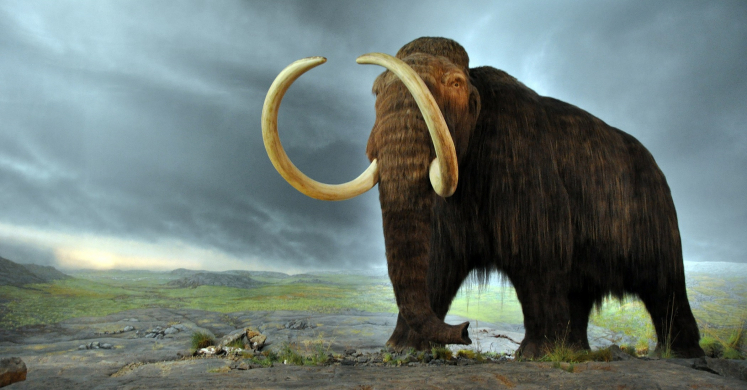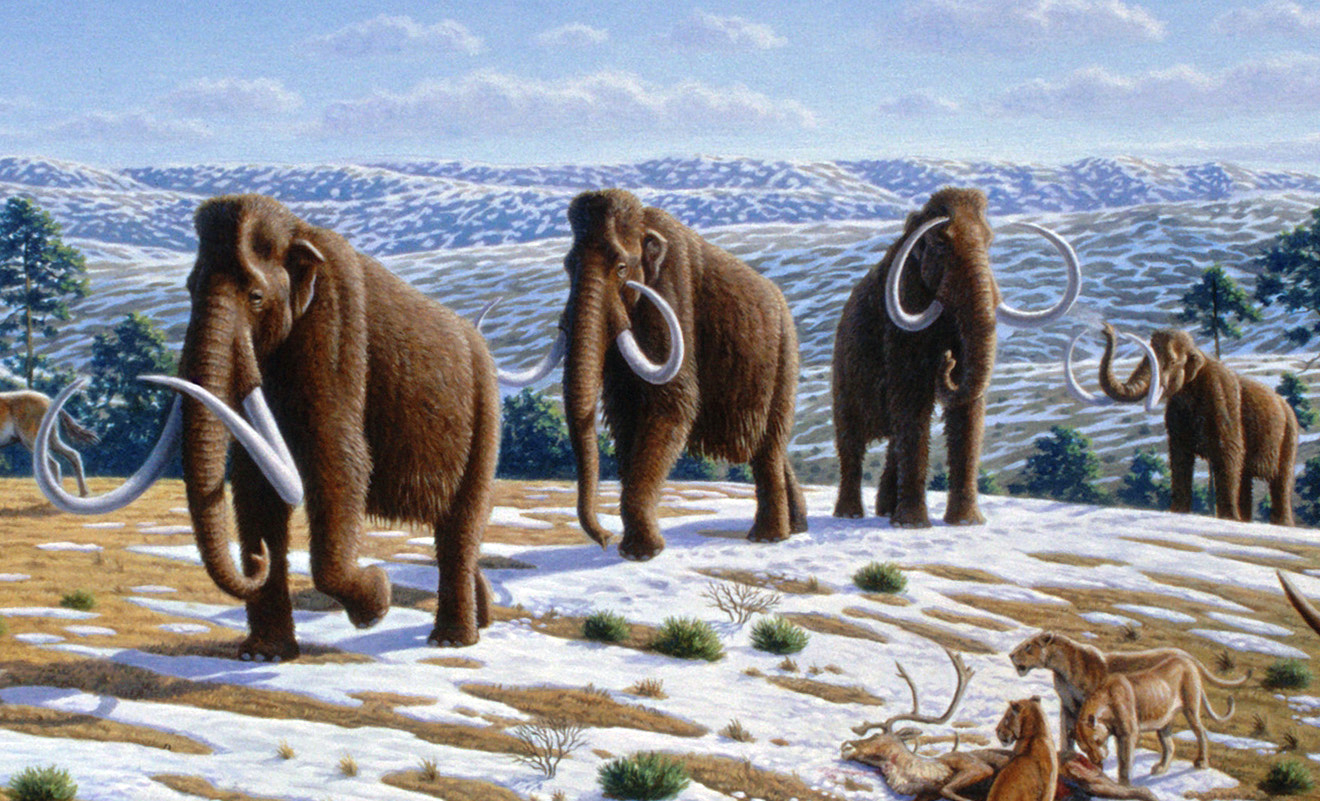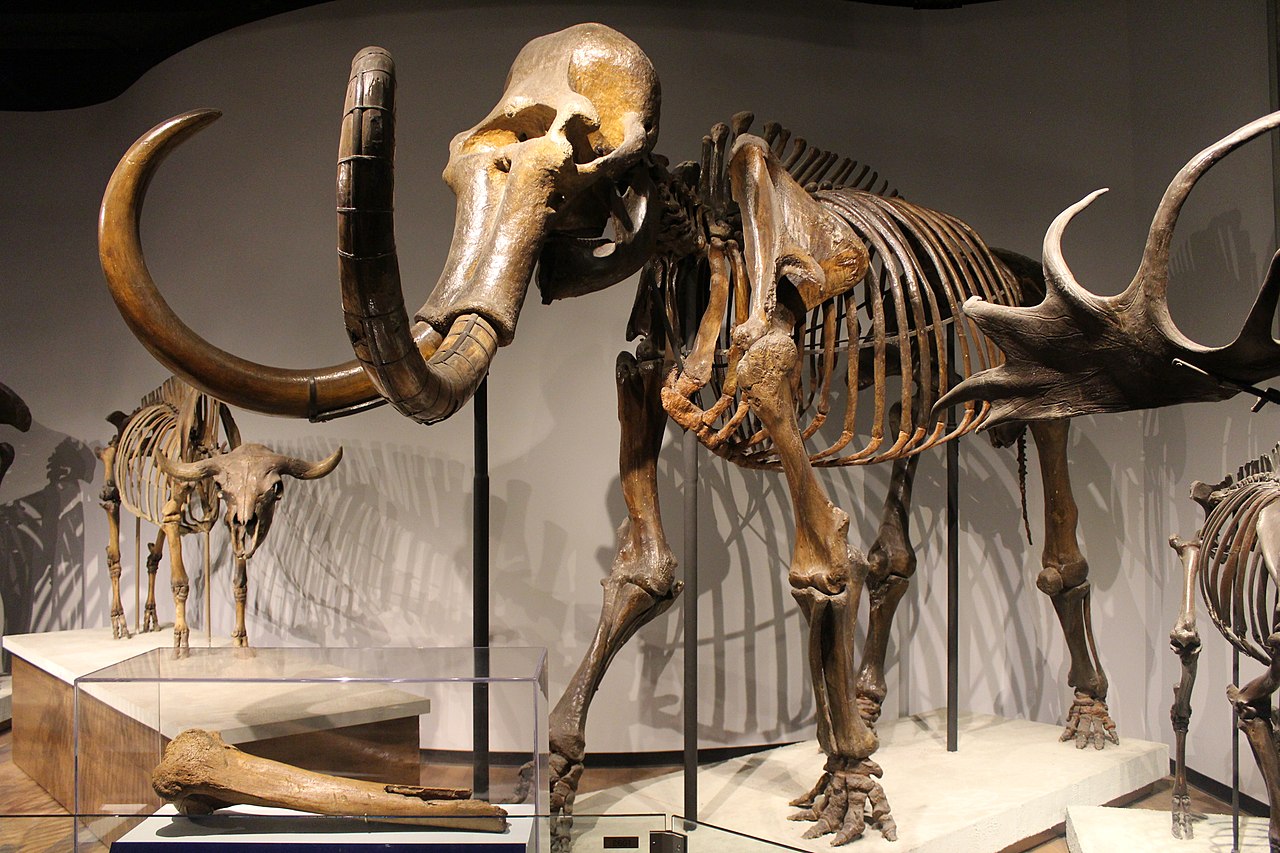Blog

#bioPGH Blog: Woolly Mammoths in the News
 A resource of Biophilia: Pittsburgh, #bioPGH is a weekly blog and social media series that aims to encourage both children and adults to reconnect with nature and enjoy what each of our distinctive seasons has to offer.
A resource of Biophilia: Pittsburgh, #bioPGH is a weekly blog and social media series that aims to encourage both children and adults to reconnect with nature and enjoy what each of our distinctive seasons has to offer.
Over the weekend, within the span of just a few hours, multiple texting threads on my phone blew up with the same story from different news outlets: a biotech company is looking at the possibility of bringing back the woolly mammoth by 2027. Yes, that woolly mammoth, one of the Elephantids of the Ice Age. Shock factor aside, is that even possible? And why would we do it? Mammoths used to be counted among the megafauna of Pennsylvania, so perhaps I have a deeply historical interest in an unusual scenario. Let’s explore this headline, shall we?
First, let’s take a step back and talk about this animal in question — the woolly mammoth. Once upon a Pleistocene Epoch (2.5 million – 12,000 years ago), Pennsylvania was indeed home to woolly mammoths, not to be confused with their long-distant cousins the mastodons, who also lived in Pennsylvania. (For reference, woolly mammoths were grazers, eating low shrubby plants and grasses near the ground, while mastodons were browsers, preferring leaves and other vegetation from taller shrubs and trees.) The Pennsylvania of 10,000+ years ago was quite a bit different than the Pennsylvania of today. The melting waters of glaciers had not yet carved out our valleys and ridges, and mammoths thrived in the scrubby grasslands of the time. Based on the fossil record and cave paintings, mammoths most likely lived in large, matriarchal herds, like modern elephants; and based on isotope analysis, it appears that herds may have migrated seasonally on occasion but it wasn’t necessarily a yearly occurrence. Mammoths disappeared from all but a few islands populations around 10,000 years ago, and it seems that the arrival of humans hastened mammoth disappearance as people were able to work in groups to hunt even exceptionally large prey.

Alright, well now that we have established mammoths, can they be…brought back? Is it possible? Is it ethical?
Let’s tackle that first question: Is this even possible? There are many angles to consider, but let’s narrow in on a few biological and ecological perspectives. Is it biologically possible — while it hasn’t been done yet, the technology and lab techniques theoretically do exist to accomplish what the company is working on. The idea is that since woolly mammoths and Asian elephants already share 99.6% of their DNA, the remaining genetic differences could be edited via CRISPR in an embryo that would be carried by an African elephant (more similar in size to a mammoth.) Of course, there are plenty of questions from there: Would the hybrid baby even survive to term? Would the hybrid be sterile? Would any co-adapted gene complexes from the parents be disrupted in the hybrid? Would the hybrid have the instincts of either or both parents, etc., etc., etc.? So yes, this is theoretically possible biologically, but practically speaking…there are still quite a few unknowns.
And what about ecological considerations? Let’s suppose that a handful of individuals capable of reproduction were indeed brought back and they survived to adulthood. Would it one day be possible to see herds of wild mammoth on the icy tundras of Siberia and northern Canada? At that point, mammoth management would face the same hurdles that any existing animals face: habitat loss, habitat fragmentation, human-wildlife conflict, and resource availability. Not to mention, they would encounter the unique hurdles of animals brought back from the edge of extinction, like Arabian oryx, Przewalski's wild horse, or golden lion tamarins also face. Small populations like these are at risk for low genetic diversity and the related high potential for inbreeding. But above all, whatever caused a population crash to begin with would need to be addressed for survival of the reintroduced (or revived?) species. For mammoths, the changing landscape from retreating glaciers coupled with the appearance of humans changed their world enough to lead to their extinction. Since we already struggle to protect habitat and even our current elephants, would we be able to support the return of elephantids that haven’t walked the Earth in millennia?
In addition, although climate change was cited as a motivating factor in bringing back the mammoths now, the timing of their life cycles is incredibly slow. Mammoths most likely shared life history traits with our modern elephants including a relatively late age for reproductive maturity (8-15 years old), long gestation period (22 months), and a long nursing period (calves wean around 3-5 years). If the goal of bringing back mammoths is to help combat climate change through habitat modification, we would be bare minimum several decades away from seeing any sort of significant impact, and by then, something will have changed — for better or worse. Maybe fossil fuel use or cost dramatically swings, but something will have already changed.
And for the final question, is it ethical? Well, ethics are based on morals, and morals stem from our individual and cultural interpretations of right and wrong, good and bad. Who can answer that for someone else? Personally, I will fully admit that if I saw an adult mammoth in person, I would probably break down and cry in sheer awe, but I would also wonder if we humans have earned a moment like that. We have already lost so many species because of human activity and we continue to lose more every year; would it be better to protect what we already have first? So perhaps we are left with more questions than we started with. But at least one thing is clear: the wild world is so amazing, even species from the long past can capture our imaginations.

Photo Credits: Cover, Royal British Columbia Museum, CC-BY-SA-2.0; herd image, Mauricio Antón, © 2008 Public Library of Science, CC-BY-2.5; woolly mammoth skeleton, Jonathan Chen, CC-BY-SA-4.0; Header, Pexels

